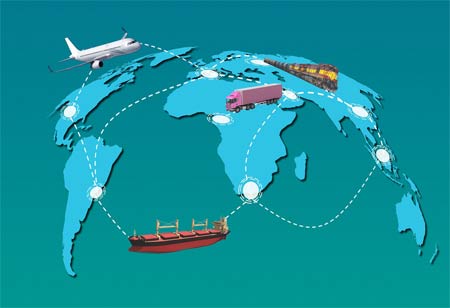THANK YOU FOR SUBSCRIBING
THANK YOU FOR SUBSCRIBING

By
Logistics Transportation Review | Wednesday, February 01, 2023
Stay ahead of the industry with exclusive feature stories on the top companies, expert insights and the latest news delivered straight to your inbox. Subscribe today.
Last-mile delivery faces numerous challenges including price hike and inefficient routes.
FREMONT, CA: "Last mile delivery" refers to the final leg of a product's journey from the warehouse shelf to the customer's doorstep.
In spite of the fact that last-mile delivery is the most expensive and time-consuming part of the shipping process, it is crucial to customer satisfaction in the long run.
The last mile problem: what is it?
Inefficiency at the last mile is evident if organizations have ever tracked a package in real-time online and seen that it was "out for delivery" for what seemed like forever. The final leg of a shipment usually involves multiple stops with small drop sizes.
Delivery points along a particular route may be several miles apart, with only one or two packages being delivered at each. Cities aren't much better; what they make up for in stop proximity is quickly negated by traffic delays.
Due to the continuous rise of ecommerce in US retail sales, which has dramatically increased the number of parcels delivered each day, as well as customers' expectations of receiving fast and free delivery, the costs of the last mile problem have been further increased.
How much does last-mile delivery cost?
Last-mile delivery costs represent 53 percent of total shipping costs. Due to the growing prevalence of "free shipping," customers are less willing to pay for a delivery, which forces retailers and logistics partners to bear the burden. Thus, it has become the first place they look to implement new technologies and improve processes.
Last mile logistics technology solutions are:
With the rise of the gig economy, many consumers are already familiar with the concept of local crowdsourcing services through apps like Uber, Airbnb, and Postmates. Mobile apps allow consumers to hail a ride, book a place to stay, order coffee to the office, send flowers, or even schedule takeout to arrive just as they walk into their apartment door using location-based crowdsourcing.
For some time now, crowdsourcing has been popular in transportation, hospitality, and food delivery, and retailers are considering it to ease their last-mile delivery woes due to its low startup costs, asset-light operations, and enhanced customer experience.
Check Out This : Hospitality Business Review
Crowdsource technology allows retailers, logistics partners, and consumers to connect directly with local, non-professional couriers who use their own transportation. Online orders can be delivered to customers faster, and customers can receive their items whenever and wherever they want. It also eliminated the need for a second or third attempt at delivery as on-demand and scheduled deliveries to ensure that customers are home during delivery.
Individuals may soon see delivery robots, drones, and self-driving vehicles making many of these drop-offs as automation continues to integrate across industries.
I agree We use cookies on this website to enhance your user experience. By clicking any link on this page you are giving your consent for us to set cookies. More info





